1. What is Aluminum?
Aluminum (chemical symbol Al) is a lightweight metal that is widely used across various industries due to its excellent physical and chemical properties. Aluminum has good electrical and thermal conductivity, corrosion resistance, and is easy to process and shape, making it an indispensable material in modern industry.
Aluminum has a low density, only about one-third that of steel or copper, but its strength and durability remain outstanding, especially when alloyed, meeting the demanding requirements of various applications. Furthermore, its recyclability makes it an important material for environmental protection and sustainable development. Because of these characteristics, aluminum is widely used in construction, transportation, aerospace, electronics, packaging, and other fields.
2. Aluminum Alloys
Aluminum alloys are alloys made primarily of aluminum with other metal or non-metal elements added. Through alloying, aluminum's strength, corrosion resistance, and hardness are significantly enhanced, making it suitable for a broader range of industrial demands.
Aluminum alloys are divided into wrought aluminum alloys and cast aluminum alloys. The former is suitable for processing by extrusion, rolling, and other methods, while the latter is shaped by casting. These aluminum alloys are widely used in the automotive, aerospace, and construction industries, replacing some of the more expensive materials like copper and steel.
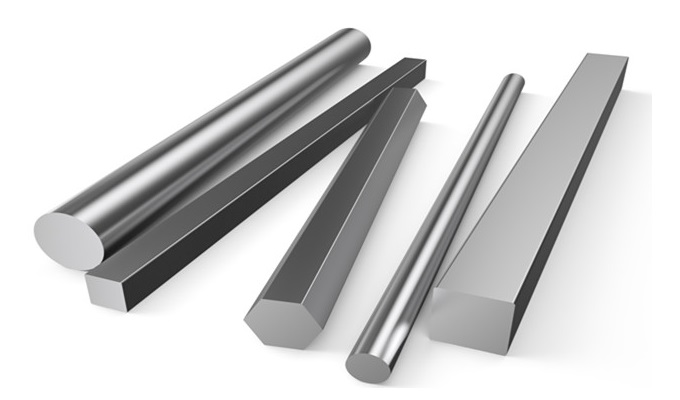
Differences Between Aluminum Alloys and Pure Aluminum
Although pure aluminum has good ductility and corrosion resistance, its low strength limits its application areas. Aluminum alloys, by adding small amounts of magnesium, silicon, copper, and other elements, compensate for this weakness. Aluminum alloys not only retain the lightweight characteristics of pure aluminum but also improve its mechanical properties, making them the material of choice for modern industrial applications.
3. Categories and Differences Between Aluminum and Aluminum Alloys
Aluminum and aluminum alloys are categorized based on their composition and performance into multiple series. Common aluminum alloy classifications range from Series 1 to Series 8, each with different characteristics. For example, Series 1 aluminum is pure aluminum, offering excellent conductivity and corrosion resistance, while Series 6 aluminum alloys are known for their mechanical strength and machinability, making them widely used in construction and structural engineering.
According to the article 8 Series Aluminum and Aluminum Alloys A Comprehensive Guide, aluminum alloys can be classified into wrought aluminum alloys and cast aluminum alloys. The alloy grades are mainly divided into 8 series. Different types of aluminum and aluminum alloys have their own advantages and are suitable for different applications.
4. Differences Between Extruded Aluminum Profiles and Die-Cast Aluminum Parts
Aluminum alloy die casting is a process where molten aluminum alloy is injected into molds under high pressure, primarily used to manufacture complex-shaped parts such as automotive components and electronic housings.
The main difference between extruded aluminum profiles and die-cast aluminum parts lies in their manufacturing processes. Extruded aluminum profiles are shaped by forcing heated aluminum alloy through a mold, suitable for long, structural components. In contrast, die casting involves injecting molten aluminum into molds, allowing the creation of more complex shapes. Though extrusion and die casting differ in cost and production methods, both have unique mechanical properties suitable for various application needs.
In the article Differences Between Extruded Aluminum Profiles and Die-Cast Aluminum Parts, these two processing methods are explored in detail. Below, Yiheda provides a thorough explanation of the differences between these two aluminum processing methods.
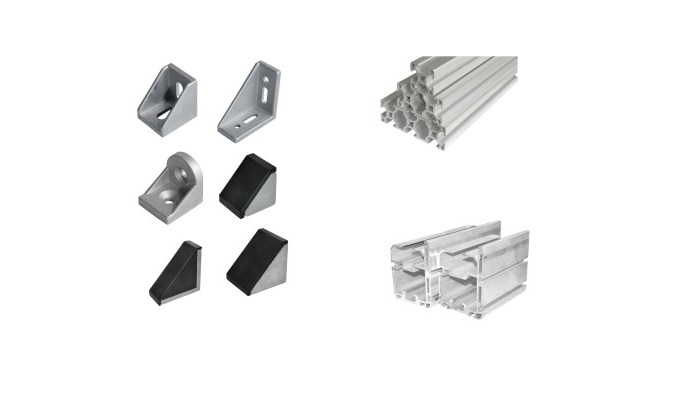
5. Aluminum Surface Treatment
Surface treatment technology for aluminum not only enhances its appearance but also improves its corrosion resistance and wear resistance. Common surface treatment methods include:
The surface treatment process includes pre-treatment, film formation, post-film treatment, packaging, storage, and shipment. Pre-treatment involves mechanical and chemical processes.
Mechanical processes include shot blasting, sanding, polishing, waxing, and other procedures. The purpose of mechanical treatment is to eliminate surface irregularities and correct other aesthetic defects. Chemical treatment removes oil and rust from the product's surface, forming a layer that enhances the bonding of the film-forming substance or reacts with active metal, ensuring the coating's stability and increasing the protective layer's adhesion.
Aluminum undergoes various chemical treatments such as chromizing, painting, electroplating, anodizing, and electrophoresis. Mechanical treatments include drawing, polishing, shot blasting, and grinding.
-Anodizing: An electrochemical process that forms an oxide layer on the aluminum surface, improving its corrosion resistance and hardness.
- Electrophoretic Coating: Uses the principle of electrophoresis to evenly coat the surface of aluminum, enhancing both decorative and protective properties.
- Powder Coating: Electrostatic forces are used to adhere powder to the aluminum surface, creating a durable protective layer.
These aluminum surface treatment technologies are discussed in the article Aluminum Materials Surface Treatment Complete Introduction. For more detailed information, you can refer to the article.

6. Aluminum Profiles
Aluminum profiles are products formed by heating and extruding aluminum alloy through a mold into various shapes, widely used in construction, industrial, and manufacturing sectors. The advantages of aluminum profiles include being lightweight, strong, corrosion-resistant, easy to process, and environmentally friendly. Depending on the use, aluminum profiles can be shaped into complex forms like frames, beams, and columns, fulfilling specific structural and functional requirements.
Aluminum profiles have widespread applications in the construction industry, commonly used for window frames, door frames, curtain wall systems, interior partitions, and other decorative materials. In the transportation industry, aluminum profiles are used to manufacture lightweight components such as automotive, train carriage, and ship structures to reduce overall weight, save energy, and improve efficiency. In industrial equipment manufacturing, aluminum profiles are essential components for support frames, conveyor systems, and more.
The production process for aluminum profiles mainly involves melting aluminum alloy, extrusion molding, and subsequent heat and surface treatments. These processes ensure that aluminum profiles have excellent mechanical properties and corrosion resistance, meeting the requirements for various environmental conditions. Due to their durability and ability to be customized for specific needs, aluminum profiles have become essential materials in modern industry and construction.

7. Aluminum Profiles vs Aluminum Sheets
Both aluminum profiles and aluminum sheets are aluminum-based materials, but they differ in shape, processing methods, and application scenarios.
Aluminum profiles are extruded aluminum alloy materials, typically in the form of long bars, tubes, or complex cross-sections, mainly used in applications requiring structural frameworks and support. Aluminum profiles are widely used in the structural frameworks of buildings, window and door systems, and support components for mechanical equipment. Their advantages include varied shapes, high load-bearing capacity, light weight, and excellent corrosion resistance, making them suitable for harsh outdoor environments.
Aluminum sheets, on the other hand, are flat sheets made from aluminum alloy through a rolling process. They are commonly used for building exterior walls, vehicle bodies, and ship hulls, where large surface coverage is required. The advantages of aluminum sheets include good flatness, oxidation resistance, and the ability to provide a smooth surface finish, ideal for covering and protective applications. Aluminum sheets are also used where large surface areas and high conductivity or thermal performance are needed, such as in electrical equipment housings and heat sinks.
When deciding between aluminum profiles and aluminum sheets, the choice depends on the specific requirements of the application. If a project requires complex structural frames and high load-bearing capacity, aluminum profiles are more suitable. For large surface coverage and exterior decoration, aluminum sheets are the best choice.
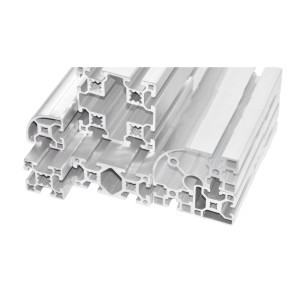
8. Differences and Characteristics of High-Quality vs. Low-Quality Aluminum Profiles
In the field of industrial automation, the application scope of industrial aluminum alloy profiles and their accessories is becoming more and more extensive, but with it comes a variety of aluminum profile products with uneven quality. To avoid these minefields, you must learn to identify inferior aluminum profile products.
1. The difference between high-quality and inferior aluminum profiles
First of all, from the appearance, the surface of high-quality aluminum profiles is generally smooth and shiny, while the surface of inferior aluminum profiles is prone to some small holes and slightly rough; secondly, from the characteristics of the product itself, high-quality aluminum alloy profiles have good hardness and flexibility, while inferior aluminum profiles have too many impurities, which makes it easy to break during use, and the service life of the product is very short.
2. Characteristics of inferior aluminum profiles
1) Insufficient thickness of surface oxide film
The surface of aluminum alloy profiles will have a layer of oxide film, which is used to slow down the oxidation rate of the internal aluminum alloy. The country also has established standards for the thickness of the oxide film on the surface of aluminum profiles. Generally speaking, the national regulations stipulate that the thickness of the oxide film on the surface of standard aluminum profiles should be greater than 10 microns, but the oxide film thickness on the surface of most inferior aluminum profiles will be thinner, and some even do not have an oxide film on the surface.
2) Complex and inferior internal components
Now some manufacturers specializing in the production of inferior aluminum profiles will mix a large amount of waste and other metals of poor quality on the basis of standard aluminum profiles. This production method greatly reduces its production cost, but at the same time it will also cause the internal components of the aluminum profiles to be messy and the product quality to be very poor. If such inferior aluminum profiles are selected, it is easy to have unexpected situations such as profile breakage and wear during use.
3) Poor corrosion resistance
High-quality aluminum profiles have a certain tolerance to corrosive and chemical factors in the environment. Inferior aluminum profiles do not pay attention to the improvement of this aspect of performance during the production process. Therefore, the chemical corrosion resistance of inferior aluminum profiles is very poor.
The above is the difference between high-quality and inferior aluminum profiles and some of the main characteristics of the latter. When purchasing aluminum profiles, you must pay attention to distinguish these two types of aluminum profile products. The best way is to choose some regular, honest and large-scale production enterprises for purchasing. Yiheta one-stop purchasing platform can provide you with one-stop convenient purchasing services, and also has a good guarantee for the quality of the products sold.
9. Bending Process of Aluminum Profiles
The bending process of aluminum profiles involves applying external force to bend the profile into specific angles and shapes. This process allows aluminum profiles to meet complex structural design requirements and is widely used in construction, transportation, furniture, and machinery manufacturing. Aluminum profiles themselves have good ductility and plasticity, allowing bending while maintaining material strength to achieve the desired shapes.
Common bending methods include cold bending, hot bending, and stretch bending.
- Cold bending: Applying force at room temperature to bend the profile. This method is suitable for handling thinner or smaller diameter profiles and is often used for simple structures or mild bending.
- Hot bending: Heating the profile to a certain temperature before bending. It is suitable for thicker profiles or profiles requiring large bending angles. Heating helps reduce the risk of cracking during the bending process and improves bending accuracy.
- Stretch bending: A more precise bending method often used for projects requiring high precision, such as in aerospace and automotive manufacturing. Stretch bending involves applying both tensile and bending forces to achieve complex shapes while maintaining the profile's strength.
Bending processes play a crucial role in the design and application of aluminum profiles. Different bending methods can meet different structural and aesthetic requirements. Yiheda has professional aluminum profile bending engineers, and if interested, you can learn more about the aluminum profile bending process in the article What is Aluminum Profile Bending Process.
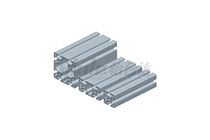
10. Verification Methods for the Load-Bearing Strength of Aluminum Profiles
The load-bearing strength of aluminum profiles refers to the maximum load they can withstand under stress, a characteristic that is crucial for safety in applications such as construction and mechanical equipment. Before use, aluminum profiles typically undergo a series of strength tests to ensure they can meet practical requirements.
- Tensile Strength Testing: This test involves gradually increasing the tensile force until the aluminum profile breaks, thereby determining its maximum tensile capacity. This test evaluates the strength performance of the aluminum profile under lateral loads.
- Bending Strength Testing: This method measures the load-bearing capacity of the aluminum profile under bending conditions by applying a bending force. Bending strength is critical for aluminum profiles used in supporting and framework structures.
- Compressive Strength Testing: This test involves gradually increasing the pressure to assess the aluminum profile's resistance under compression. This method is typically used for aluminum profiles in load-bearing structures or mechanical support components.
Different verification methods help engineers and designers understand the performance of aluminum profiles and ensure their safety and reliability in use. Through rigorous testing, it is ensured that aluminum profiles will not deform or break due to overload during use. The above provides a brief introduction to the verification methods; for more information on additional verification methods and their practical applications, please refer to the article Aluminum Profile Load Bearing Strength Verification Methods.
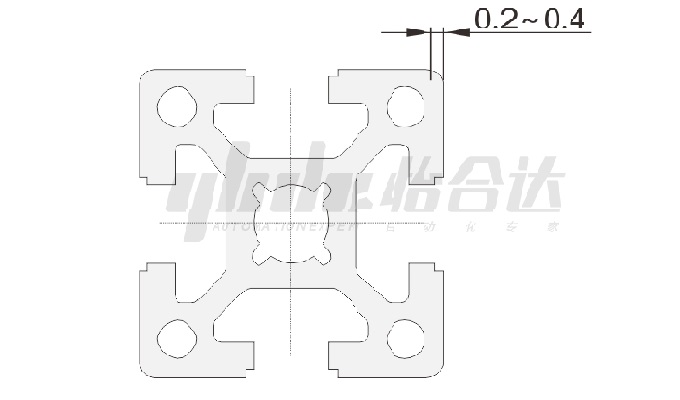
11. Connection Methods for Aluminum Profiles
In practical applications, aluminum profiles need to be connected to other components to form a complete structure. Common methods for connecting aluminum profiles include bolt connections, welding, and fastener connections.
- Bolt Connections: This is one of the most common methods for connecting aluminum profiles, suitable for applications requiring high structural strength and frequent disassembly. Bolt connections are convenient and quick, ensuring the stability and safety of the structure.
- Welding: Welding forms a strong bond by melting the connecting parts of the aluminum profiles, typically used for structures that require permanent connections. The advantage of welding is that it provides a very strong connection, but the downside is that the material properties at the welded joints may be affected by heat, making them more brittle.
- Fastener Connections: This method allows connections to be made without damaging the surface of the aluminum profiles and is widely used in furniture, frame structures, and assembly systems. Fastener connections are straightforward and offer good disassembly flexibility, but caution is needed when used in high-strength applications.
Each connection method has its own advantages and disadvantages, and designers need to choose the most suitable connection method based on actual structural requirements and usage scenarios to ensure the performance and safety of aluminum profiles. Yiheda, along with mechanical enthusiasts, although diligent, can't cover every method exhaustively. This article briefly introduces "[20 Aluminum Profile Connection Methods]" with visual demonstrations through animated graphics for easy comprehension and reference.
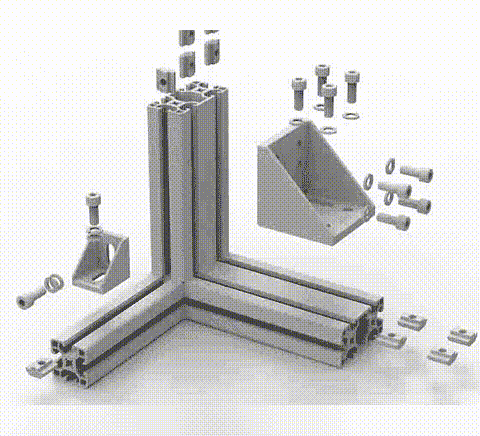
12. Applications of Industrial Aluminum Extrusions
Industrial aluminum extrusions, known for their outstanding strength-to-weight ratio, corrosion resistance, and plasticity, have become essential materials across multiple industries. Here are some typical application fields:
- Automotive and Transportation: Aluminum extrusions are used to manufacture car frames, doors, roof supports, and structural components of rail vehicles. Due to aluminum's lightweight characteristics, it can significantly reduce the weight of transportation vehicles, improve fuel efficiency, and decrease carbon dioxide emissions.
- Aerospace: The aerospace industry has stringent material requirements, and aluminum profiles are widely used in aircraft wings, fuselages, and landing gear structures. These components provide sufficient strength while also reducing the weight of the aircraft, thus improving flight efficiency.
- Construction Industry: In the construction industry, aluminum profiles are used for window frames, curtain wall structures, and load-bearing frameworks. Aluminum profiles are not only aesthetically pleasing and durable but can also withstand external wind pressure and temperature changes, providing excellent safety and stability.
- Electronic Devices: Aluminum profiles are used in electronic devices for heat sinks and enclosures. Aluminum's good thermal conductivity effectively dissipates heat, extending the lifespan of electronic components.
- New Energy Sector: In fields like photovoltaics and wind power, aluminum profiles are used to manufacture structures like solar panel supports and wind turbine towers. The lightweight and corrosion-resistant nature of aluminum makes it an ideal choice for outdoor equipment, enhancing durability and reducing maintenance costs.
Additionally, various products made from aluminum extrusions have become indispensable across different industries. The article 7 Common Applications of Industrial Aluminum Extrusion provides a brief introduction to several common application examples of industrial aluminum extrusions, aiming to inspire readers who are new to the world of aluminum profiles.
13. Conclusion
Aluminum and aluminum profiles will continue to play an indispensable role in the future of industrial development. As the global demand for lightweight, energy-saving, and environmentally friendly materials continues to grow, the application scope of aluminum materials will further expand. Whether in the automotive, construction, aerospace, or new energy sectors, aluminum profiles provide efficient, reliable, and environmentally friendly solutions for various industries.
Looking ahead, innovations in aluminum materials technology will drive the development of more high-performance alloys, and surface treatment processes will become more diverse to meet different environmental needs. With increasing attention to the recyclability of aluminum materials, aluminum profiles will play a larger role in sustainable development and the circular economy. Overall, as one of the core materials of modern industry, aluminum's future application prospects are incredibly broad.

